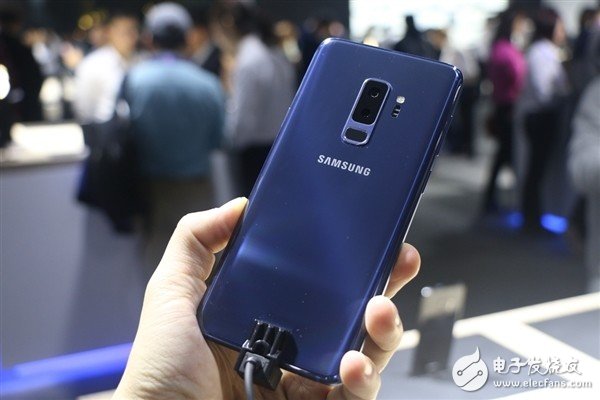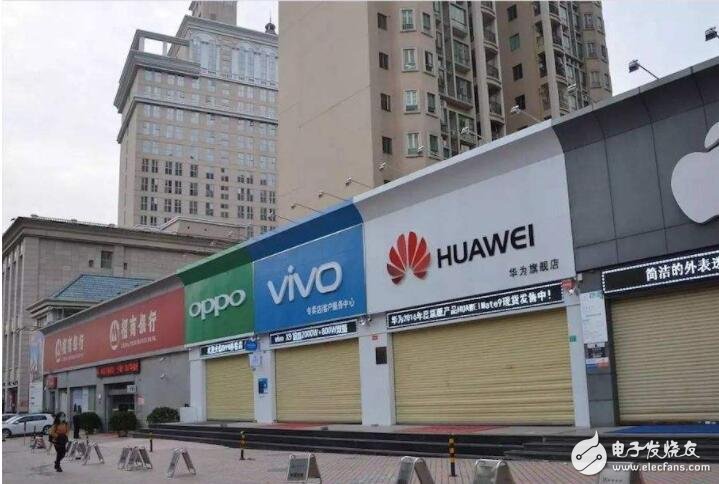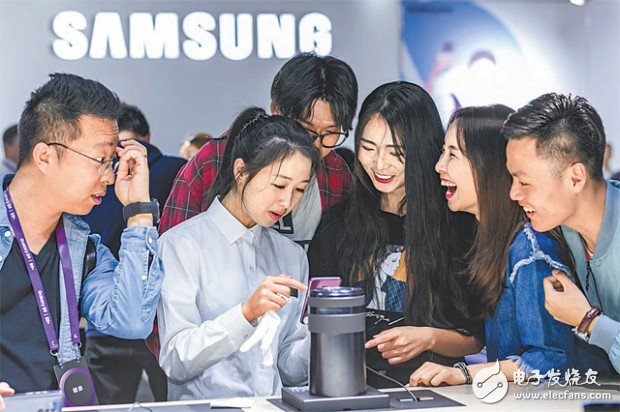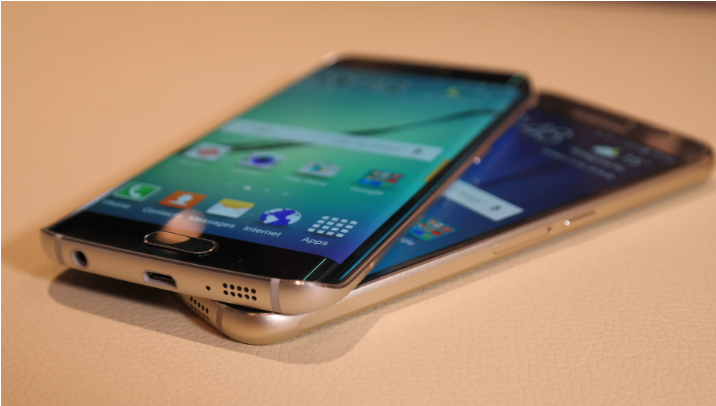In the fourth quarter of 2017, sales of Samsung smartphones in China were a bit bad, with a market share of only 1.7%. This fact is clearly not what Samsung executives are unwilling to accept. Now they are eager to launch the Galaxy S9 series of mobile phones in China, just want to play a turnaround in the high-end market. However, this battle is not good!
Samsung held a press conference in Guangzhou to launch the Galaxy S9 series of mobile phones in China. The conference was held at the Haixinsha Gymnasium in Guangzhou. The opening and closing ceremonies of the 2010 Guangzhou Asian Games were also held there. A total of 2,500 guests attended the conference, some from companies working with Samsung, and some from the media.

Samsung mobile phone China share began to decline from Galaxy S5, sales last year only 10 million units
In 2014, Samsung launched the Galaxy S5, and since then, its share in China has been declining. An industry insider said: "The decline in sales was partly due to the fact that the Galaxy S5 did not meet market expectations, and because China has strongly supported domestic companies since 2014, such as Huawei and Xiaomi."
According to the data provided by Strategy AnalyTIcs, Samsung had a 1.7% share in the Chinese smartphone market in the fourth quarter of last year, and annual sales fell to 10.9 million units, only half of the 23.6 million units in 2016. Chinese companies Huawei, Oppo, Vivo, and Xiaomi account for more than half of the market. In the high-end market, Apple's share is still very large, but the iPhone is not as popular as it used to be.

For the sake of the situation, Samsung had to cut the scale of its business in China. However, Ko Dong-jin, the new president of Samsung IT and the mobile division, stressed that Samsung will adhere to the localization strategy and will continue to dig deep into the Chinese market, which he said at the press conference.
In China, Samsung has 3,500 stores. An industry executive said: "In recent years, Apple has increased its publicity in the Chinese market. Apple CEO Cook even said that it is a bit excessive. From the launch of the Galaxy S9, Samsung will adopt a similar offensive strategy."
In the Southeast Asian market, Samsung also suffered a strong "siege" from Chinese mobile phone manufacturers.
On the streets of Kuala Lumpur, Jakarta, and Manila, if you see more and more people using Chinese smartphones, don't be surprised, because the total sales of Chinese mobile phones has surpassed Samsung. Samsung has always been the leader in Southeast Asia. .
According to IDC, last year, Oppo, Vivo, and Huawei shipped 29.8 million smartphones in emerging markets in Southeast Asia, accounting for 29.6% of the total.
Such figures are already completely beyond Samsung. Samsung shipped only 29.3 million units in the region last year, with a share of 29.1%. Emerging markets in Southeast Asia include Indonesia, Myanmar, the Philippines, Thailand, and Vietnam.

In the past few years, Chinese Android mobile phone companies have been actively expanding overseas because of the fierce competition in China's domestic market and growth has stagnated.
In 2017, sales of smartphones in China fell by 4.9%, the first decline in eight years. Looking at emerging markets in Asia, it could become the growth engine for Chinese mobile phone manufacturers.
Jensen Ooi, senior market analyst at IDC Asia Pacific Equipment Research Team, said: "The Chinese smartphone market is saturated. These brands are starting to focus on overseas markets and looking for room for profit growth. For Chinese brands, Southeast Asia is very important because of the large population there. ."
There are 11 countries in Southeast Asia, with a total population of about 653.4 million, of which 49% live in urban areas. In emerging markets in Asia, although Chinese companies continue to narrow the gap with Samsung, according to IDC statistics, Samsung is still the largest mobile phone brand in Southeast Asia last year.
The crowds are competing in the Southeast Asian market, and the status of Samsung’s market leader is threatened.
In 2016, total mobile phone shipments in Southeast Asia were approximately 101.3 million units, compared to approximately 100.7 million units in 2017. However, in the total shipments in Southeast Asia, low-end devices accounted for 37% of the total, and mid-range mobile phones grew rapidly, accounting for 27% of total shipments.
Oppo and Vivo are subsidiaries of BBK Electronics. In Southeast Asia, they are the second largest brands after Samsung, with a share of 17% and 7.2% respectively. In the past few years, Southeast Asia has been the focus of Oppo. In 2009, it has already entered Thailand. Just the previous year, Oppo has just appeared in the Chinese market. In Southeast Asia, Oppo has set up 300 retail stores and has pulled many third-party distributors into its own camp. In 2014, Vivo entered the Southeast Asian market, and it used the big-screen mobile phone to take the lead, which is called “phabletsâ€.
In order to establish a brand image in Southeast Asia, Oppo and Vivo invite celebrities to help out. Last year, Oppo sponsored the Indonesian variety show X Factor.
Huawei is the largest mobile phone company in China and the third largest mobile phone company in the world. However, according to IDC data, its market share in Southeast Asia is only 5.4%, ranking fourth. In the mid-end mobile phone market, Huawei competes with Oppo and Vivo with Nova.
Apple is the world's second-largest smartphone brand. In the Southeast Asian market, it ranks fifth, with shipments of approximately 4.5 million units, a share of 4.4%. IDC pointed out that there are some old models that help Apple in the mid-range smartphone market, mainly iPhone 5, iPhone SE and iPhone 6.
Therefore, we have seen such a picture: in the Southeast Asian market, Chinese companies want to take food from the leading brother Samsung, and Chinese companies are also inside the knife; in the Chinese market, Samsung wants to rely on the Galaxy S9 counterattack to catch up with Chinese companies.

Can S9 help Samsung rejuvenate in China? I am afraid that it is not enough to rely on a flagship alone.
Can the Galaxy S9 really help Samsung rejuvenate in China? Ko Dong-jin obviously thinks so. In his keynote speech, he said: "Samsung will continue to bring new value to Chinese consumers and the Chinese economy. Samsung will continue to invest in technological innovation."
The game that Samsung wants to play is obvious: it cooperates with Chinese local technology giants, such as Baidu, Alibaba, WeChat, Mobai, and Jingdong, to develop AI and LOT devices for Chinese users.
In fact, Samsung has invested in the Chinese market. In addition to coping with Chinese companies, it also challenges Apple. Obviously, Apple is Samsung's main competitor. In the Chinese market, Apple is in a tough situation because the iPhone X has not sold well in China since its launch. If Samsung can make a big share in the Chinese market, it can gain the upper hand.
For mobile phones, price and quality should be the most important. If Chinese consumers are really interested in the Galaxy S9 and S9+, they will be able to show sales through the next few weeks.
Of course, in the eyes of geeks, the high-end Galaxy S9 and S9+ alone are expected to be difficult to bring Samsung back to the top of the market. Samsung and Apple have encountered multi-product siege situations in China, such as Huawei, Xiaomi, OPPO and vivo, and they are obviously powerless.
RAM/RFM electric heating capacitors
RAM/RFM Electric Heating Capacitors
Electric Heating Capacitor,Film Heating Capacitor,Electric Capacitor Bank,Induction Heating Capacitors
YANGZHOU POSITIONING TECH CO., LTD. , https://www.pst-thyristor.com